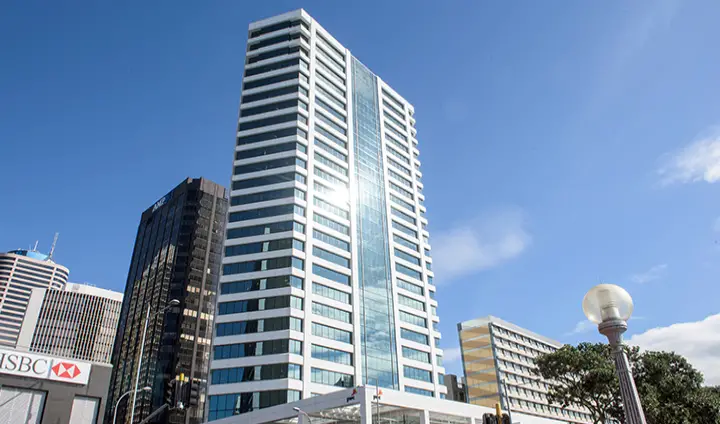What Is a Small Business?

Table of Contents
Small businesses, also referred to as small and medium-sized enterprises (SMEs), are private corporations, partnerships or sole proprietorships that meet revenue or employee standards, as defined by the U.S. Small Business Administration. According to the most recent government data, there are over 33 million small businesses in the United States, accounting for 99.9% of all American businesses, and employing nearly half of all private sector employees.
Small businesses are an important driver of the U.S. economy and therefore have access to valuable resources such as contracts and grants, mentorship and training, and small-business loans.
Small business definition
The SBA guidelines for defining a small business are used by most financial institutions in the U.S. and can generally be broken down into two categories.
General qualifications
To be considered a small business, a company must be:
-
A for-profit business of any legal structure.
-
Independently owned and operated.
-
Not nationally dominant in its field.
-
Physically located and operated in the United States or U.S. territories, with some exceptions.
Small businesses that want to contract with the government must meet additional basic requirements, like maintaining compliance with applicable laws and regulations and registering with System for Awards Management (SAM), a database that government agencies use to find contractors.
Size standards
A small-business size standard is a number that reflects the largest a business can be before it’s no longer considered small. There are two metrics used to reference size standards: number of employees and average annual revenue. In general, the SBA’s small business definition is an independent business with fewer than 500 employees; however, the precise threshold for each metric varies significantly by industry.
Did you know…
While the Consumer Financial Protection Bureau uses the SBA’s general qualifications to define small business, the CFPB’s size standard states that a business’s gross annual revenue for the preceding fiscal year must be $5 million or less. Some lenders may prefer this size criteria because of the CFPB’s small-business lending rule, which will require lending institutions to report data on their small-business credit applicants beginning in late 2024.
How to size your business
If your business meets the general qualifications of a small business, the next step is to make sure it meets the size standards.
Find your NAICS code
The exact size standard for your business will come down to how it’s classified according to the North American Industry Classification System (NAICS), which is a system used to classify businesses for reporting U.S. economic data. NAICS codes are assigned by different government agencies based on the primary business activity, which may be identified by business owners themselves. Though the purpose of a NAICS code is primarily for data reporting, it’s also used by various government agencies, regulatory boards, trade associations and even lenders.
To find your NAICS code, you can use the database on the NAICS website that allows you to search based on keywords. You can also assign yourself more than one code, if you feel your business operations fall outside the scope of just one classification.
Locate the corresponding size standards
Most industry sectors use average annual receipts or a combination of receipts and employees to determine whether a business qualifies as small. The SBA’s table of size standards details the precise threshold for each industry, further broken down by NAICS code. Standards can vary greatly across NAICS codes within the same industry, so determining your correct code is important. You can also use the SBA’s size standard tool to search by your NAICS code.
By general industry sector, you can expect to see the following size standards.
|
Agriculture, forestry, fishing, hunting |
Between $2.25-$34 million in annual receipts; one code limited to 500 employees. |
|
Mining, quarrying, oil and gas |
Between 500-1,500 employees; or between $20.5-$47 million in annual receipts for four codes. |
|
Between 250-1,150 employees; or between $30-$41 million in annual receipts for three codes. |
|
|
Between $19-$45 million in annual receipts. |
|
|
Between 500-1,500 employees. |
|
|
Between 100-250 employees. |
|
|
Between $9-$47 million in annual receipts; or between 100-200 employees for two codes. |
|
|
Transportation and warehousing |
Between $9-$47 million in annual receipts; or between 550-1,500 employees for 15 codes. |
|
Between $11-$47 million in annual receipts; or between 900-1,500 employees for 13 codes. |
|
|
Between $15-$47 million in annual receipts; or $850 million in assets for four codes; or 1,500 employees for one code. |
|
|
Professional, scientific and technical services |
Between $9-$47 million in annual receipts; or between 150-1,500 employees for seven codes. |
|
Between $38.5-$45.5 million in annual receipts. |
|
|
Administration, support, waste management, remediation services |
Between $8.5-$47 million in annual receipts; one code limited to 1,000 employees. |
|
Real estate, rental and leasing; health care; arts, entertainment and recreation; educational services; food services and accommodation; other services like auto repair shops and beauty salons |
Why the small business definition matters
Businesses that are classified as small are an important part of the economy but can struggle to compete with larger enterprises. To help them do so, small businesses can access additional resources, including:
-
Loans. SBA loans are partially guaranteed by the government to encourage lenders to support small businesses, and come in different varieties depending on how much capital a business needs and for what. In addition to SBA loans, banks, online lenders and nonprofit lenders also offer additional small-business financing options such as term loans, lines of credit and equipment financing.
-
Government contracts. The SBA ensures that a portion of all government contract work goes to small businesses, and it even counsels smaller businesses on winning government contracts. It also offers a business development program, the SBA 8(a) program, that allows members to access competitive government contracts and occasionally bypass the bidding process altogether.
Find the right business loan
The best business loan is generally the one with the lowest rates and most ideal terms. But other factors — like time to fund and your business’s qualifications — can help determine which option you should choose. NerdWallet recommends comparing small-business loans to find the right fit for your business.







